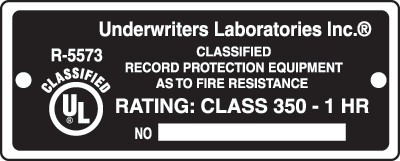
FREE SHIPPING
*On Orders Over $250We Call Within 48 Business Hours to Confirm Order
FREE SHIPPING
*On Orders Over $250We Call Within 48 Business Hours to Confirm Order
I’ve written articles about fire-rated safes before, What do Fire Safe Ratings Mean and How Much Fire Rating Do You Need in a Safe, to assist you in determining your needs when it comes to protecting your documents in a fire.
But HOW do fire rated safes work?
Fire safes provide fire protection by using materials that act as insulation. The most common is gypsum board (also known as drywall, fire board, sometimes called Sheetrock (a trademark branded name owned by USG Corp). Some fireproof safes use a poured-in insulation material that will act similar to gypsum, though various proprietary blends. These may vary in their level of protection.
Low-end safes use simple drywall as their main insulation, and higher-end fire rated safes use a more fire-resistant drywall or a poured slurry containing gypsum (and other ingredients).
For simplicity, I’ll focus on gypsum board, but the same concept applies elsewhere.


Gypsum is a naturally occurring mineral, the chemical name for gypsum is Hydrous Calcium Sulfate (CaSO4-2H20). It’s made up of calcium, sulfur, oxygen, and water. The water is combined in a chemical reaction to the other minerals, and the resulting product contains H2O of about 20% by volume and 50% by weight.
Gypsum can also be produced and refined in other industrial processes. It became very popular after WWII when the building boom was happening in the US, because it was less expensive than traditional lath and plaster.
It’s the water molecules in gypsum that make it become a fire-resistant material used in fireproof safes.
In the manufacturing of gypsum into drywall, additives are added in precise quantities to achieve desired fire ratings. Type X drywall has additives to increase fire resistance. Type C is like Type X, but with more glass fibers and a form of vermiculite added, increasing resistance even further, up to 2 times as long as standard Type X.
What happens in a fire is the exterior walls of the safe begin to heat up. This heat is then transferred to the next layer in your safe, which is likely the gypsum board or slurry that was poured between the interior and exterior walls of the fire safe (which will of course has cured by the time it’s in your home.)
At above 80° C (180° F) Gypsum starts a process called ‘gypsum dehydration’ or ‘calcination’. This isn’t like evaporation like you see in your swimming pool. This is a chemical reaction where the bonds that hold the water, chemically attached in the gypsum, start releasing their bonds that hold them together. It’s a chemical reaction happening, which changes the structure of the molecules themselves. And it takes lots of lots of heat to get it done.
It’s this reaction makes fire safes work to protect your valuables. This reaction takes a lot of energy (heat) to occur, and every bit of energy going into calcinating the gypsum is heat that is NOT making it to the contents within your fire rated safe. Chemically, it looks like this:
CaSO4.2H2O(s) → CaSO4.½H2O(s) + 3/2H2O(g)
This results in a chemical called calcium sulfate di-hydrate (CASO4 ½H2O). Heat it above 250° Celsius and a further chemical reaction takes place, removing the rest of the water:
CaSO4.½H2O(s) → CaSO4(s) + 1/2H2O(g)
After the gypsum has all been converted by the heat, the end result is that the gypsum has been converted to a dry plaster of paris and steam. At this point, the value of the gypsum as a fire protector is over.
It has – literally – run out of steam.
But that steam generated during the fire is also useful. If the fire rated safe has a good inner door seal, the exiting steam created a positive pressure inside the safe walls, preventing smoke from entering the safe body.
Fire rated safes that have been through a fire cannot be reused. They is finished. The fire resistant board or gypsum is now a powder. It has lost all of it’s fire resistance. Drywall that has been enhanced with fiberglass or vermiculite will hold together better (at least not falling apart), but has also lost its fire resistance.
After a fire, you’ll want to gain access to your safe as soon as possible (this can be days in some cases). When the protective steam from the drywall/slurries outlasts the fire, steam will still exist which can begin to corrode metals and deteriorate other content.
You will almost certainly need to hire a locksmith to gain access.
Even though you cannot reuse a fire safe after a fire, contact the manufacture of the safe. A lot of manufacture’s warranties include lifetime replacement of the safe if it is ever in a fire. So you might get a new fire safe at no cost.